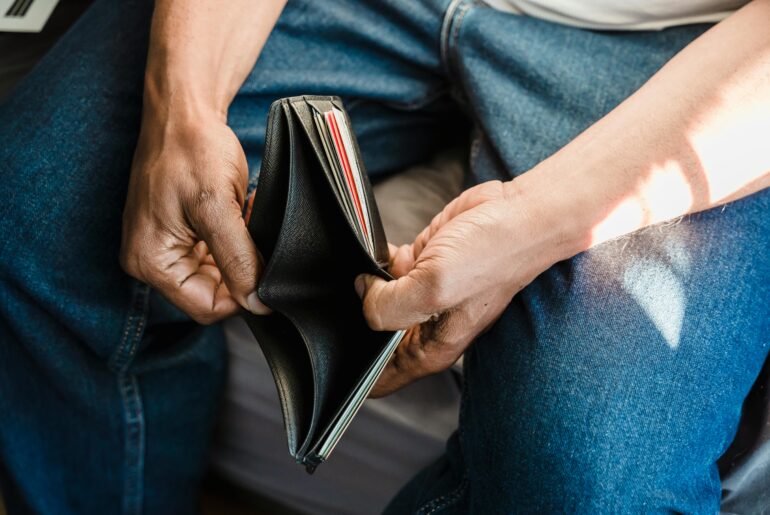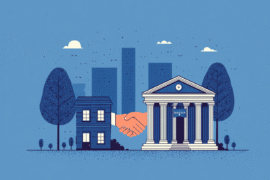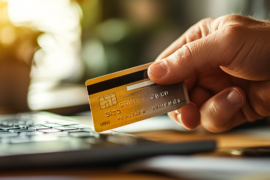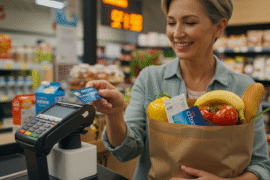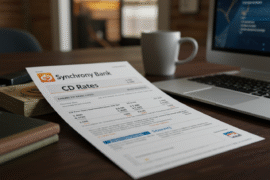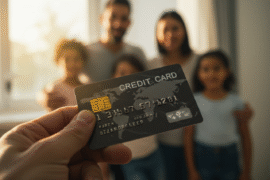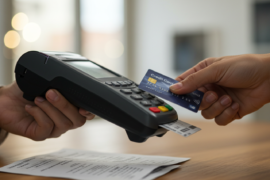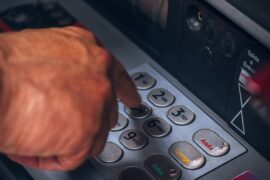This article may contain references to products or services from one or more of our advertisers or partners. We may receive compensation when you click on links to those products or services. Nonetheless, our opinions are our own.
The information presented in this article is accurate to the best of our knowledge at the time of publication. However, information is subject to change, and no guarantees are made about the continued accuracy or completeness of this content after its publication date.
From coins jingling in our pockets to flashing contactless cards, the way we pay for goods and services has changed dramatically. And today, the shift toward digital payments isn’t just a ripple — it’s a tide reshaping global finance. Even industries like online gaming and entertainment are reflecting this evolution. For example, platforms such as Crusino Casino, known for its wide range of slots, fast payouts, and generous promotions like Crusino casino no deposit bonus codes, show how digital transactions are becoming the new norm — even in traditionally cash-heavy spaces.
In this article, we’ll explore the journey from cash to digital, examine key trends driving the change, investigate global use patterns, discuss challenges and risks, and ask: is a fully cashless future truly possible?

- 1. The Evolution of Money: From Barter to Bytes
- 2. Drivers of the Cashless Revolution
- 3. Key Digital Payment Innovations
- 4. Global Digital Payment Trends
- 5. Steps Towards a Cashless Society
- 6. The Benefits of Going Cashless
- 7. Challenges & Risks to Consider
- 8. Case Studies Around the World
- 9. What the Future Holds
- 10. Should You Embrace the Cashless Future?
- Conclusion
- Recommended Reads
1. The Evolution of Money: From Barter to Bytes
Money didn’t start as the dollar, euro, or bitcoin — it began as barter, the direct exchange of goods. As societies grew more complex, currencies emerged to simplify trade. Over time, those physical currencies evolved into banknotes and coins, eventually giving rise to credit cards in the mid-20th century, and digital money by the turn of the 21st.
Today, it’s easier than ever to pay with just a tap, click, or wave, and millions have never used cash in their lives. Digital revolutions like mobile wallets, peer-to-peer (P2P) apps, cryptocurrencies, and even central bank digital currencies (CBDCs) are pushing that evolution forward — faster than anyone expected.
2. Drivers of the Cashless Revolution
Several factors are accelerating the shift toward digital payments:
- Consumer Demand: People want speed, convenience, and frictionless experiences.
- Mobile Penetration: Smartphones are nearly universal, making mobile payments accessible.
- Security & Tracking: Digital records reduce fraud and make managing finances easier.
- Cost Efficiency: For banks and retailers, digital transactions are cheaper than printing and distributing cash.
- Pandemic Influence: COVID-19 accelerated contactless payments and reduced cash use dramatically.
Rewind to 2019, and digital alternatives were popular but still secondary. In just a few years, tasks like paying rent via app, tipping with a QR code, or sending money overseas for pennies have become common — and globally adopted.
3. Key Digital Payment Innovations
Let’s highlight the main tools behind a cashless world:
a. Mobile Wallets & Contactless Payments
Apps like Apple Pay, Google Pay, Alipay, and WeChat Pay let users pay with their phones or smartwatches. Contactless cards do the same with a tap. These methods are fast, secure, and often integrated with loyalty programs.
b. Peer-to-Peer (P2P) Transfers
Platforms such as Venmo, Zelle, PayPal, and Revolut make instant transfers between friends or family easy — no cash needed for splitting bills or paying rent.
c. Buy Now, Pay Later (BNPL)
BNPL services like Klarna, Afterpay, and Affirm let customers split payments interest-free, offering flexibility while promoting digital-first spending.
d. Cryptocurrencies and Blockchain
Bitcoin, Ethereum, and over 10,000 altcoins serve both as speculative assets and payment methods. While adoption is still niche, new technologies like stablecoins (USDC, USDT) are bridging crypto and daily commerce.
e. Central Bank Digital Currencies (CBDCs)
Countries like China (e-CNY), Sweden (e-krona), the Bahamas (Sand Dollar), and several others are piloting or launching government-backed digital currencies aimed at replacing cash while keeping central control.
4. Global Digital Payment Trends
While the shift toward cashless transactions is global, how it plays out varies greatly by region, depending on culture, infrastructure, regulation, and innovation.
- China has arguably become the poster child of the cashless revolution. In major cities, QR code payments via WeChat Pay and Alipay are so dominant that even street vendors and buskers accept mobile payments. Carrying physical money is becoming unusual, especially among younger generations.
- Europe and North America rely heavily on contactless debit and credit cards, which have become the default method of payment in restaurants, stores, and public transit. In the U.S., platforms like Venmo, Zelle, and Cash App have normalized P2P transfers among friends, while in Europe, Revolut and Wise are simplifying cross-border payments.
- Africa and India are leapfrogging traditional banking infrastructure with mobile-first solutions. Kenya’s M-Pesa allows users to store, send, and withdraw money using basic mobile phones, which has dramatically expanded access in rural and underserved regions. In India, the Unified Payments Interface (UPI) has created a real-time, government-backed digital ecosystem used by millions daily.
- In the Nordic countries, particularly Sweden, cash is nearly obsolete. Most retailers no longer accept it, and banks rarely carry physical currency. Less than 2% of transactions in Sweden now involve cash, and the country is actively piloting a central bank digital currency (e-krona).
Across all regions, we see a consistent pattern: fewer ATMs, shrinking bank branches, and booming digital wallet usage. What began as a convenience is quickly becoming the standard.
Voted "Best Overall Budgeting App" by Forbes and WSJ
Monarch Money helps you budget, track spending, set goals, and plan your financial future—all in one app.
Get 50% OFF your first year with code MONARCHVIP
5. Steps Towards a Cashless Society
Moving toward a completely cashless society isn’t just about offering mobile payments. It requires a broad transformation of infrastructure, policy, and social readiness.
To fully eliminate cash, several critical components must work in unison:
- Infrastructure: Digital payments rely on more than just apps — they require reliable internet, secure servers, fast transaction processing systems, and devices that are widely accessible. Rural and low-income regions must be brought up to digital speed for cashless systems to be viable.
- Inclusion: A cashless world must not leave anyone behind. That means ensuring access to affordable smartphones, digital identification systems, bank accounts, and financial literacy education. Without these, entire segments of the population risk being excluded from everyday commerce.
- Interoperability: Digital systems need to talk to each other across borders and platforms. If a mobile wallet in one country can’t transfer to a platform in another, or if local stores don’t accept a global card, digital payments remain fragmented and inconvenient.
- Regulation: Governments and financial institutions must put in place robust frameworks for consumer protection, data privacy, anti-money laundering (AML) standards, and fraud detection. The transition must be not only efficient but also safe and transparent.
Achieving a truly cashless society isn’t about flipping a switch — it’s about building a resilient, inclusive digital ecosystem. Until all these factors align, cash will continue to coexist with digital money in many parts of the world.
6. The Benefits of Going Cashless
A move toward digital payments offers several clear advantages for both individuals and businesses:
- Convenience & Speed: Paying with a tap or scan is faster than handling cash. Features like automatic bill splitting and one-click checkouts simplify everyday transactions.
- Security & Traceability: Digital payments reduce the risk of theft and fraud. Every transaction is recorded, making it easier to track spending and resolve disputes.
- Cost Savings: Handling and processing cash is expensive. Digital payments lower operational costs for businesses and reduce banking fees for users.
- Financial Inclusion: In many regions, mobile payment systems help reach people without access to traditional banking — especially in rural or developing areas.
- Innovation: Going cashless supports the growth of new financial technologies — from programmable payments to smarter budgeting tools — that enhance user experience.
These benefits help explain why cashless systems are gaining momentum worldwide, offering not just efficiency, but broader economic accessibility.
7. Challenges & Risks to Consider
Despite the appeal, going fully cashless brings challenges:
a. Privacy & Surveillance
Digital money leaves an audit trail. Government and private entities can track spending habits — which raises serious privacy concerns.
b. Digital Divide
Not everyone has access to smartphones or banking. Vulnerable groups like in the elderly or rural areas could be excluded unless steps are taken to include them.
c. Cybersecurity Threats
Hackers and data breaches pose risks — secure encryption and authentication strategies must keep pace.
d. Dependence on Tech
Power outages, system failures, or server crashes can paralyze commerce in a fully digital system.
e. Cultural Resistance
Cash remains a symbol of autonomy and security. In parts of Europe, Latin America, and Africa, physical money is still trusted and preferred.
8. Case Studies Around the World
Sweden: Leading the Charge
With over 80% of transactions digital, Sweden is experimenting with e-krona and closing bank branches. Yet, cash remains accepted — thanks to cultural trust and phased transition.
China: Lotteries, QR Codes, Every Checkout
China’s smartphone payments outpace other nations. QR-based systems made contactless mainstream, fast. But alongside government control, this system offers unprecedented tracking power.
Kenya: Financial Inclusion via Mobile
M-Pesa brought basic banking to millions. Now, digital credit and savings services rely on mobile platforms, proving cashless solutions can empower emerging economies.
U.S.: Contactless & Unbanked
Contactless cards and P2P apps are common, but ~5% of adults remain unbanked. Initiatives for prepaid cards, USPS banking, and fintech solutions aim to balance convenience and inclusion.
9. What the Future Holds
- Digital Currency Coexistence: Cash and digital will coexist for years. CBDCs may outpace cash in some areas, but coins will remain symbols of personal control.
- Interoperable Platforms: Expect global payment standards and better cross-border solutions.
- Embedded Finance: Payments integrated into apps (ride-share, chat, etc.) will reduce the need for traditional wallets.
- Privacy Innovations: Emerging solutions like zero-knowledge proofs and privacy coins could solve surveillance concerns.
- Smarter Money: Programmable payments — think subscriptions, escrowed transfers, or conditional spending — will become mainstream.
10. Should You Embrace the Cashless Future?
For individuals:
- Stay informed: Understand your rights, options, and security features.
- Keep some cash: Be prepared for outages or unexpected scenarios.
- Embrace choice: Use digital when convenient and cash when appropriate.
For businesses:
- Offer multiple options: Cashless and cash acceptance maximizes accessibility.
- Invest in security: Encryption, monitoring, and PCI compliance are essential.
- Stay compliant: Follow evolving privacy laws, digital ID regulations, and cross-border rules.
Conclusion
The future of money is clearly heading toward digital, but the journey will be gradual and uneven. Mobile wallets, P2P transfers, BNPL services, crypto, and CBDCs are shaping a more flexible, efficient, and inclusive financial system.
Yet, the cashless future isn’t without its challenges: privacy concerns, technological dependence, and gaps in access require careful handling.
Ultimately, whether a society becomes fully cashless will depend on aligning technology, policy, and public trust. But regardless of how fast it happens, one fact is clear: the digital transformation of money is unstoppable — and understanding its implications is essential for anyone navigating modern life.

Reviewed and edited by Albert Fang.
See a typo or want to suggest an edit/revision to the content? Use the contact us form to provide feedback.
At FangWallet, we value editorial integrity and open collaboration in curating quality content for readers to enjoy. Much appreciated for the assist.
Did you like our article and find it insightful? We encourage sharing the article link with family and friends to benefit as well - better yet, sharing on social media. Thank you for the support! 🍉
Article Title: Is the Future of Money Cashless? Exploring Digital Payment Trends
https://fangwallet.com/2025/07/15/is-the-future-of-money-cashless-exploring-digital-payment-trends/The FangWallet Promise
FangWallet is an editorially independent resource - founded on breaking down challenging financial concepts for anyone to understand since 2014. While we adhere to editorial integrity, note that this post may contain references to products from our partners.
The FangWallet promise is always to have your best interest in mind and be transparent and honest about the financial picture.
Become an Insider

Subscribe to get a free daily budget planner printable to help get your money on track!
Make passive money the right way. No spam.
Editorial Disclaimer: The editorial content on this page is not provided by any of the companies mentioned. The opinions expressed here are the author's alone.
The content of this website is for informational purposes only and does not represent investment advice, or an offer or solicitation to buy or sell any security, investment, or product. Investors are encouraged to do their own due diligence, and, if necessary, consult professional advising before making any investment decisions. Investing involves a high degree of risk, and financial losses may occur including the potential loss of principal.
Source Citation References:
+ Inspo
There are no additional citations or references to note for this article at this time.
